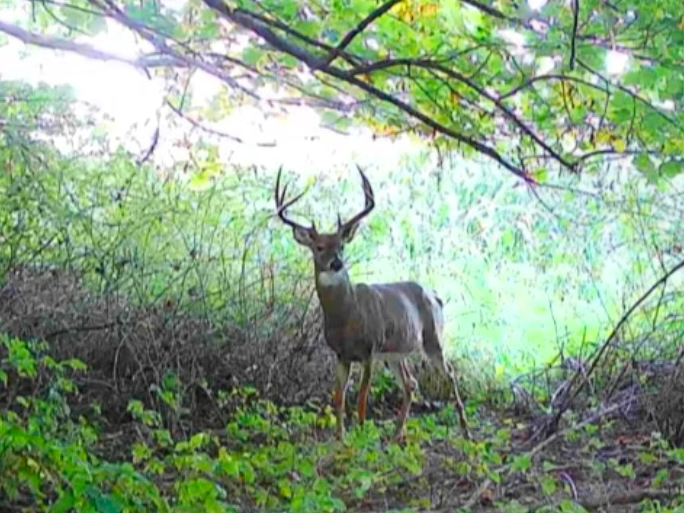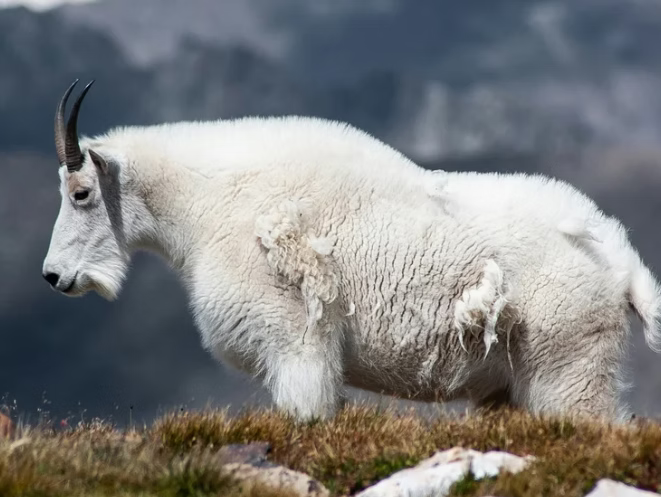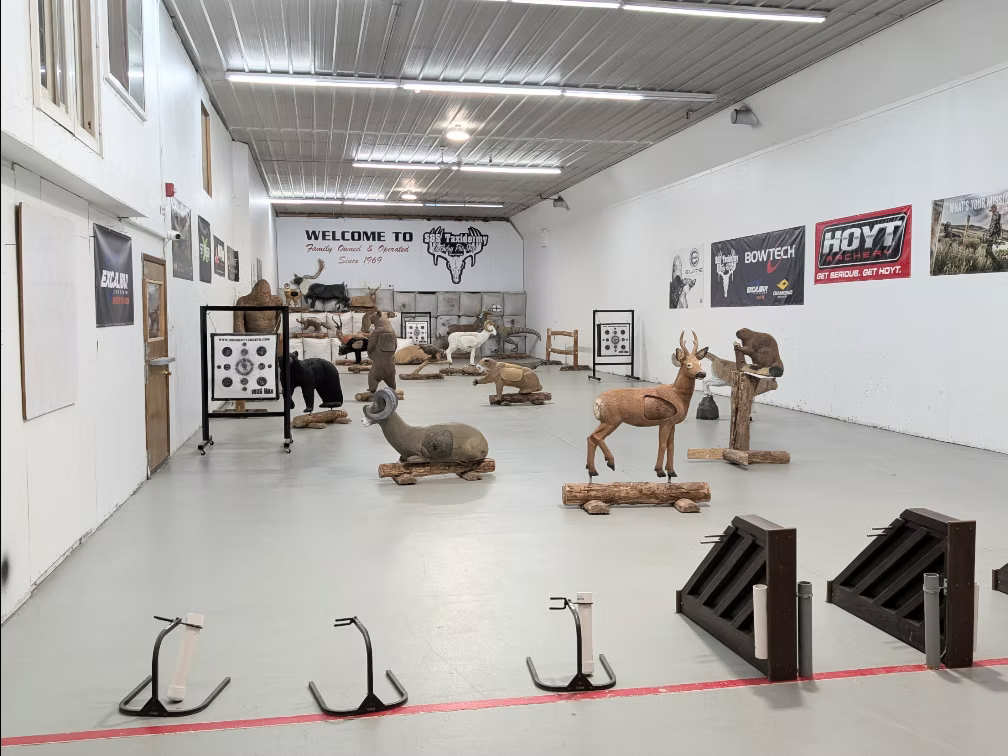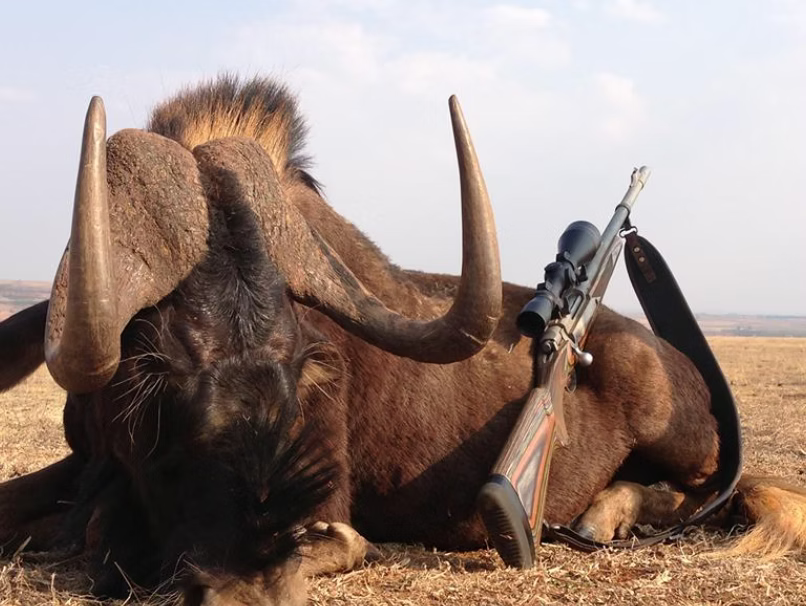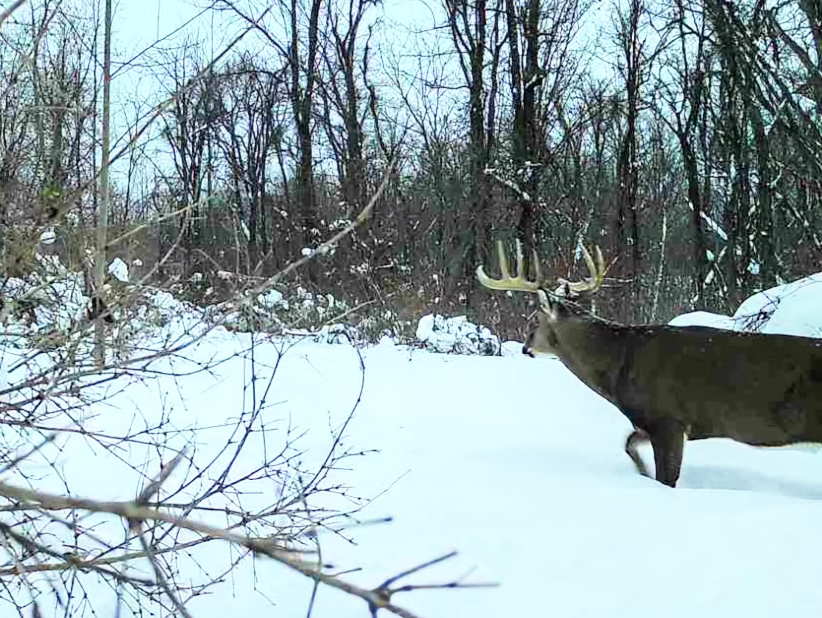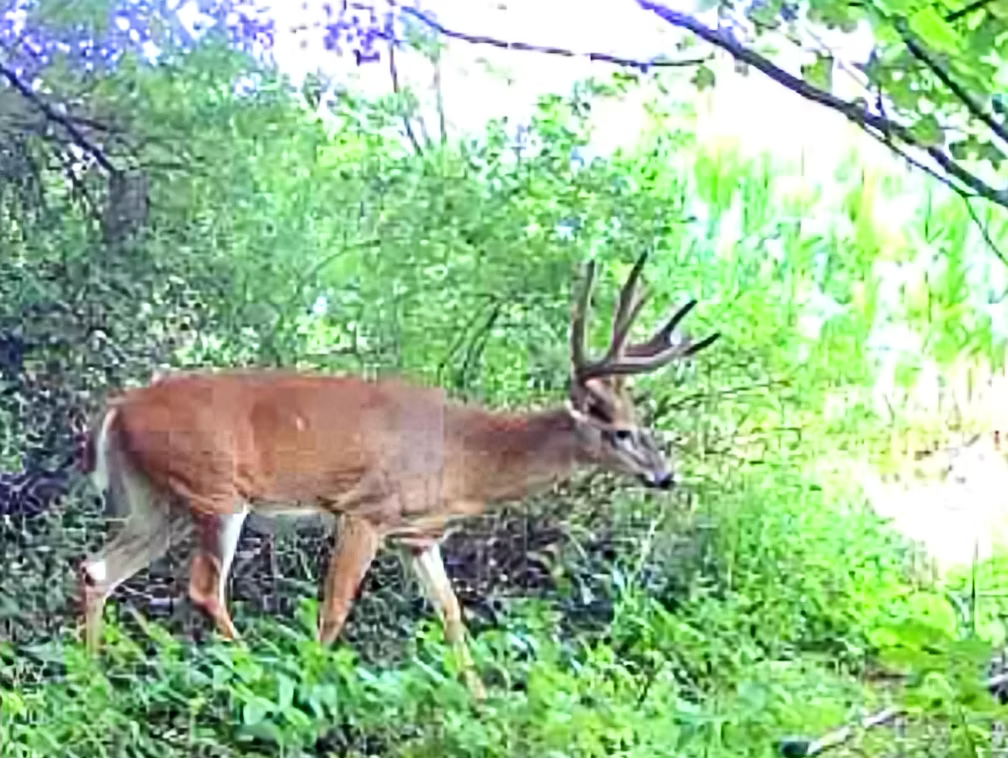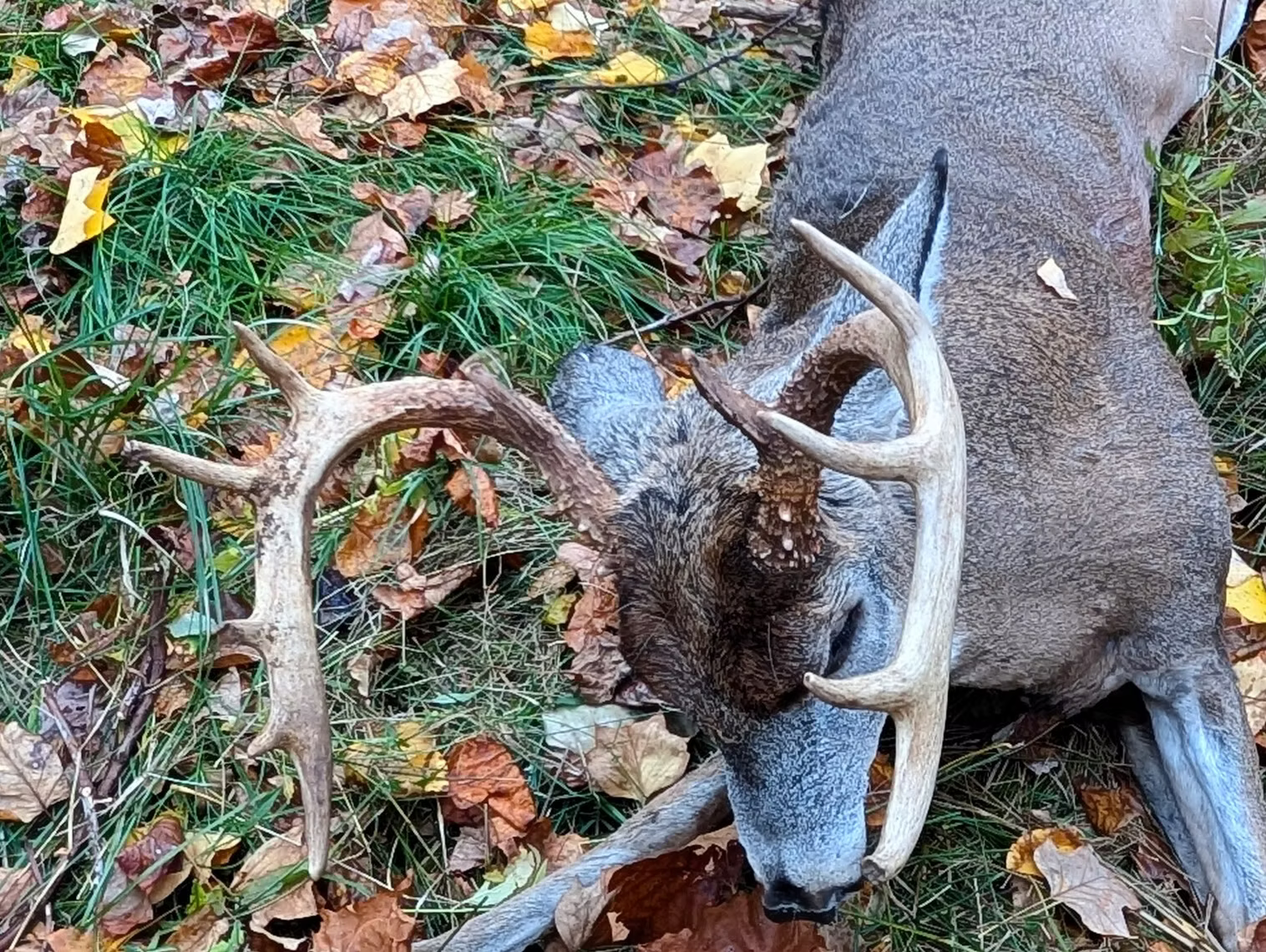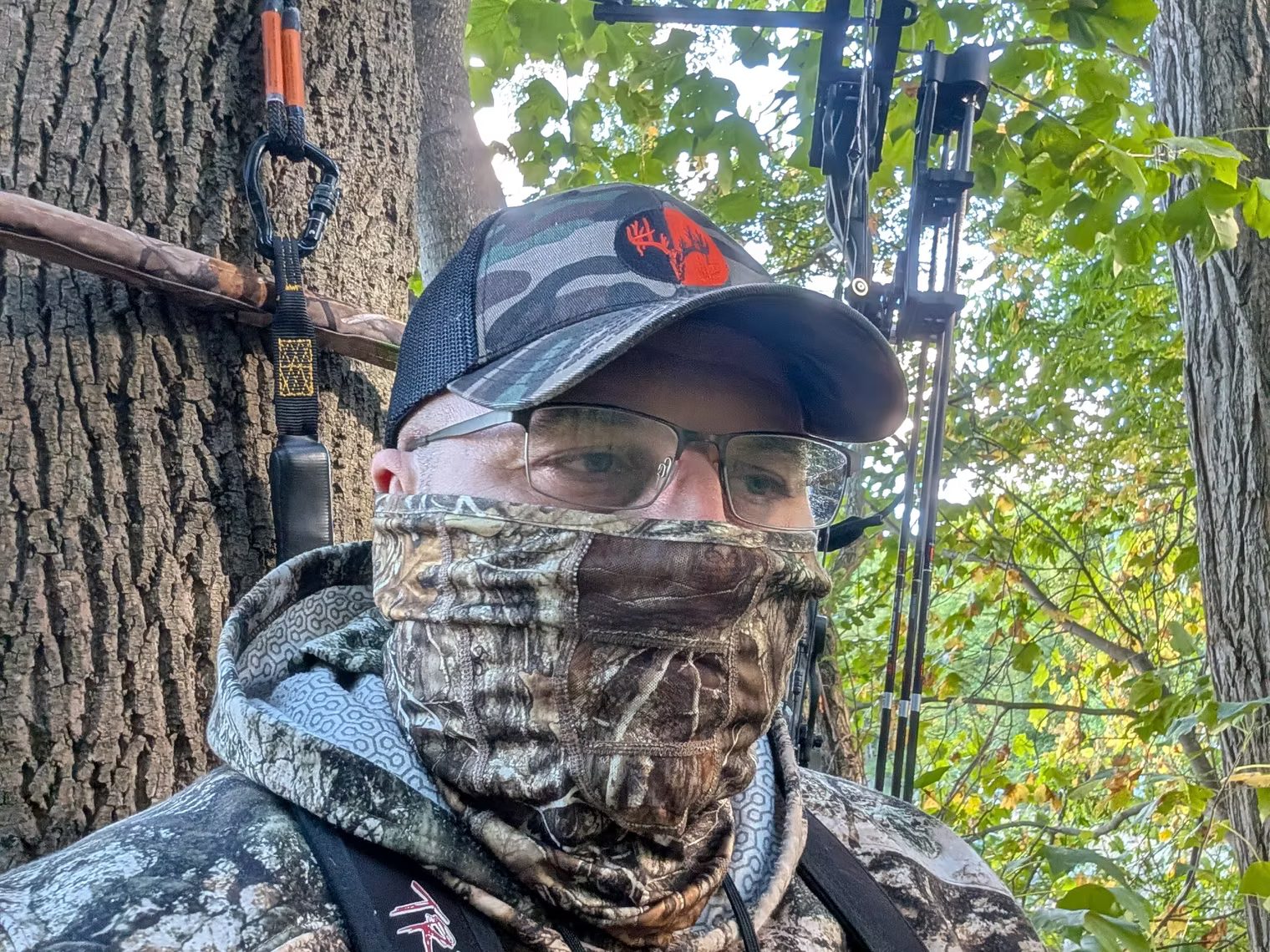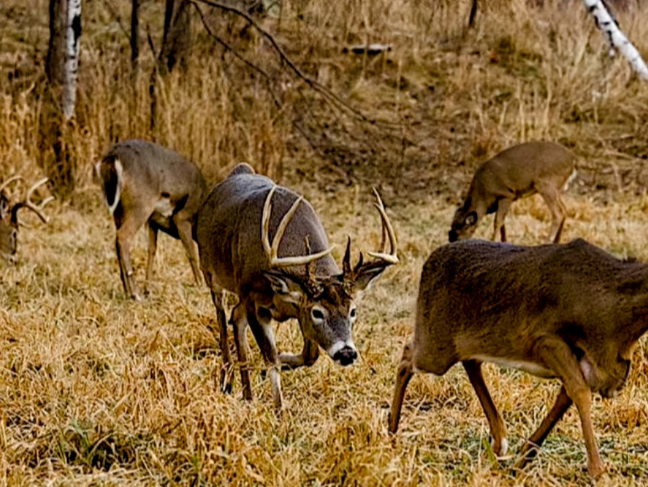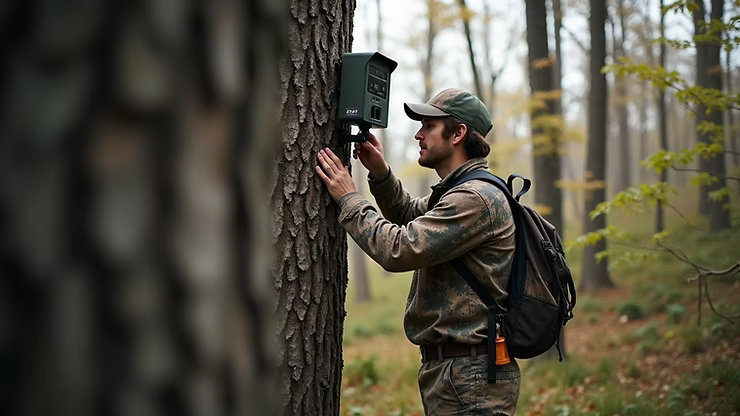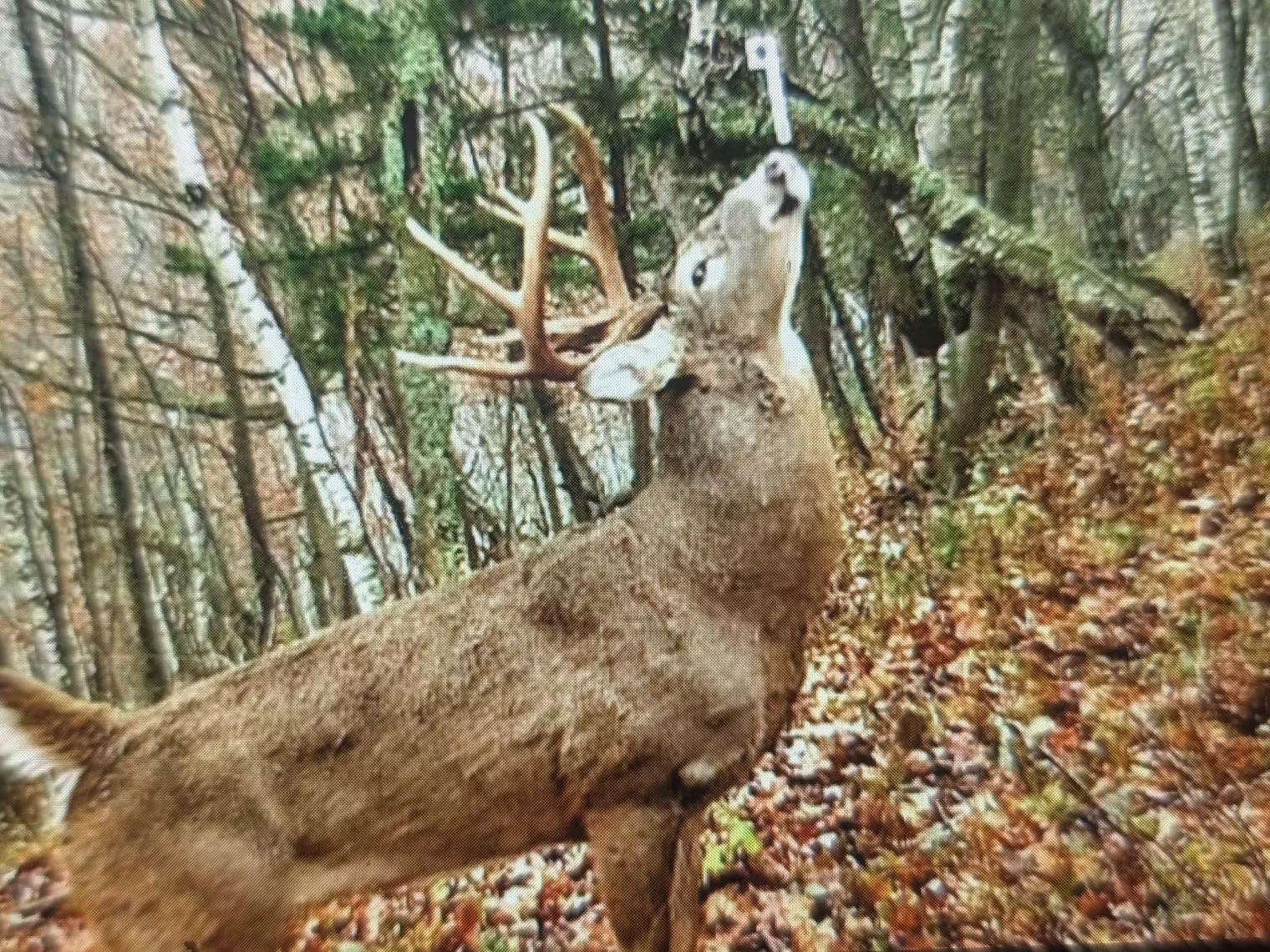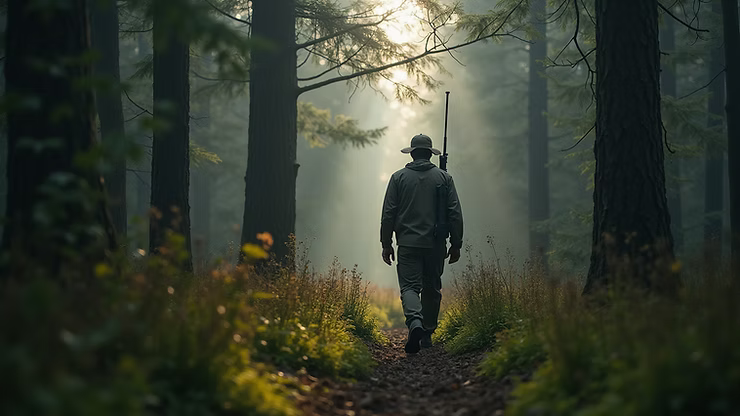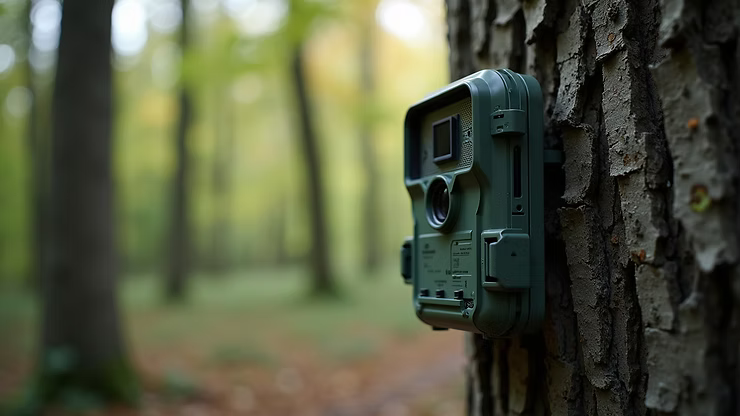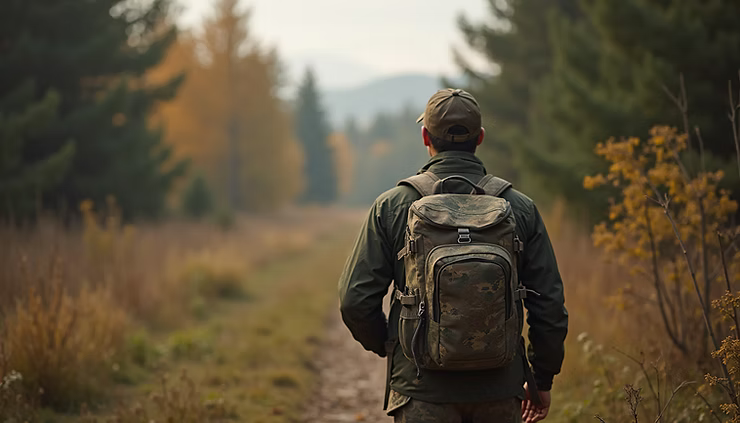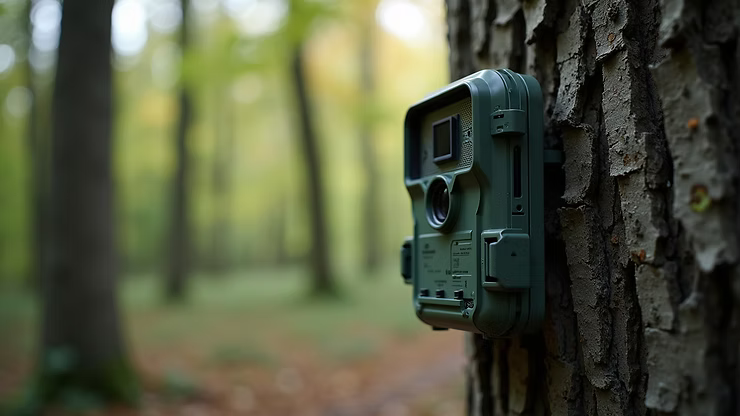The Velvet Shed: Unlocking One of the Whitetail’s Most Predictable Phases
No, we’re not talking about a rustic cabin lined in velvet. We’re talking about one of the most important, misunderstood, and huntable phases in a whitetail buck’s life—the velvet shed. It happens quietly. No grand announcement. No explosion of activity like the rut. But for those who’ve spent their summers glassing soybean fields and watching big-frame bucks develop their racks under a soft, fuzzy sheath, it’s the moment the game starts to change.
You spend all summer watching bachelor groups come and go. Your trail cams light up at dusk with crisp silhouettes of clean-bodied giants feeding calmly in the open. You name them, study them, dream about them. Then suddenly, sometime in early to mid-September, they’re gone. Ghosted. As if they vanished into the trees and evaporated with the morning fog. But they didn’t go far—and they didn’t disappear. They simply entered the next phase of their seasonal transformation. A phase that separates the casual hunter from the calculating one.
Velvet shedding isn’t just a physical change; it’s a full-body hormonal reboot. It’s a behavioral pivot that kicks off a series of events leading to territoriality, dominance, and eventually the chaos of the rut. But if you tune into this shift, you’ll realize something powerful—bucks are still highly patternable during this time. The key is understanding what they’re going through, where they’re going, and how to quietly intercept them before the crowd chases them into lockdown mode.
To do that, we have to start at the root—what velvet is, why it’s shed, and what’s happening inside that buck’s body when the change occurs.
Velvet isn’t just for show. It’s a living tissue rich with blood vessels and nerve endings. During spring and summer, a buck’s antlers grow rapidly, fueled by a blend of testosterone, growth hormones, and essential nutrients like calcium and phosphorus. That fuzzy-looking velvet acts as a protective sheath while feeding those antlers with oxygen-rich blood. Bucks spend those months focused on one thing: feeding. Their social structure is relaxed. Bachelor groups form. Movement is consistent. Nutrient intake is everything.
Then, like clockwork, as the days shorten and the photoperiod shifts, a buck’s pituitary gland gets the signal: It’s time to cut the blood supply. The velvet starts to dry. Testosterone begins to rise. And the calm of summer begins to evaporate.
That velvet, once so critical, now becomes a nuisance. It itches, flakes, and peels. And bucks react by thrashing it off on the nearest sapling or fence post they can find. The process is fast—usually complete in a day or two per buck—but the ripple effect it triggers is huge. Within days of shedding their velvet, bachelor groups begin to split. Bucks get more solitary. Their movement tightens up. The woods change tone. And if you’re paying attention, your trail cams—especially Tactacam Reveals or similar setups—will begin to pick up subtle changes. New rubs. Early scrapes. Nighttime photos. One less buck in the group than the week before.
Some hunters call this the “ghost phase,” when the bucks they tracked all summer suddenly disappear. But they didn’t vanish—they simply transitioned. Often, bucks retreat to thicker bedding cover. It may be a pocket of tall grass just inside a CRP line, or a gnarly blowdown a hundred yards off the field edge. It’s usually not far, but it’s enough to change their daylight activity.
What’s most important to understand is this: during the days and weeks following velvet shed, bucks are not yet in full rut mode. Their testosterone is rising, yes, but their priorities haven’t shifted to breeding. They’re still feeding, still resting, and still adhering to a pattern—just a more conservative one. This is your opportunity. A small window before chaos erupts. And if you know how to find where they moved to, you can kill them while they’re still predictable.
In the next stretch of this article, we’ll explore how to scout these velvet-shed bucks, interpret their movement shifts, and hunt smart while others are still waiting on the rut. The truth is, the velvet shed phase is one of the best times to tag your target buck—not by luck, but by learning to read the woods like he does.
All summer long, the woods play a different tune. Bucks are relaxed, predictable, and highly visible. Their priorities revolve around three things: food, cover, and minimal disturbance. They feed heavily on high-protein crops like soybeans and clover, moving from bedding to field edges often within daylight. This is the window where the average hunter becomes a cameraman and the woods turn into a gallery of velvet-capped bone.
During these calm summer evenings, glassing fields becomes the bread and butter of preseason strategy. You can pattern a buck down to the minute, often watching him take the same trail into the same corner of the same field night after night. With the help of tools like the Tactacam Reveal, your camera becomes a silent scout—capturing not just time and movement, but temperature, moon phase, direction of travel, and who that buck is traveling with. These consistent patterns paint a reliable picture that many hunters use to build their early season ambush plans.
But the part most hunters overlook is how temporary this calm really is. Those bucks you’ve been watching with a cocktail in one hand and binoculars in the other are about to undergo a complete psychological shift. They don’t know it, but they feel it—and their bodies are already preparing. This is where so many plans fall apart. Hunters assume the bucks will maintain those field patterns into the bow season opener, only to find empty trails and quiet cameras. What they fail to realize is the velvet shed marks the end of a phase and the beginning of a much more secretive one.
When a buck sheds his velvet, it’s not just about getting rid of itchy skin. It’s the first physical act of the pre-rut phase. It’s the buck saying, “I’m becoming something different.” Testosterone begins its climb. Bucks leave the bachelor groups and begin claiming space. That space—often just a few hundred yards away—becomes a temporary sanctuary. These are the hidey holes you never saw coming: thick creek-bottom tangles, interior ridge beds, brushy knobs in overlooked corners of timber.
The buck is still there. He’s still feeding. Still moving. But now he’s moving on his terms.
This post-velvet phase often occurs in late September through the first week or two of October, depending on your region. In the Northeast, velvet typically drops the first or second week of September. In the Midwest, it’s often around Labor Day. In southern states, it can happen even earlier. Regardless of the timing, the behavioral blueprint remains largely the same. It’s like watching a calm lake begin to ripple before the storm.
What hunters must understand is this: you have about a two- to three-week window where bucks are still on a pattern—but they’re now more cautious, more secluded, and less likely to be seen in wide-open spaces. The feeding continues, but they’re often hitting oak flats, mast-heavy ridges, or interior browse rather than ag fields. This is the time to shift your camera strategy. Move them off the field edges and onto secondary trails. Set them up near staging areas just inside the woods. Look for fresh rubs popping up like breadcrumbs along transition lines. These are the clues left behind by a buck who is settling into his new pre-rut home range.
Contrary to popular belief, many mature bucks don’t travel miles and miles during this time. In fact, the average core area during early fall may shrink. They feel the change in their bodies, but the urgency to breed hasn’t kicked in yet. So they stay close to what they know—food and cover. You might catch them slipping out before dark to feed on white oak acorns or quietly browse on natural forage, but it’s going to be subtle. Rarely bold. Rarely consistent from one day to the next.
This is where your woodsmanship matters more than your food plots. It's where reading sign, understanding wind, and minimizing intrusion become the holy trinity of mature buck hunting. If you know where a buck beds and where he now feeds, you can set up with surgical precision between those two points—especially during this post-velvet lull when most hunters are still sitting field edges wondering where all the deer went.
If you’re running cell cams, now is the time to focus not just on photos, but on patterns. What direction is he coming from? Is he always hitting that scrape at night, or did he surprise you with a daylight appearance in a pinch point you overlooked? Is there a consistent wind direction tied to his appearance? Your cameras are more than eyes—they're a data stream. And if you read them like a hunter and not just a fan, they’ll tell you where to be.
Of course, some hunters will say this is the dreaded “October lull.” But let’s call that what it is—a myth, born from misunderstanding. Bucks don’t stop moving in October. They just stop making mistakes. They shift into sanctuary habits. They spend more time on their feet in cover and less time in open exposure. The feeding continues. The rubbing continues. And if your stand is placed where a buck feels safe moving, you’ll still get shot opportunities.
Think about this: if a buck is bedding in a thick point of timber and feeding on acorns just 150 yards away, why would he walk 400 yards to a field he knows is hunted? He wouldn’t. And that’s why trail cameras placed near suspected bedding terrain, and on subtle, quiet food sources, become your best tools. You don’t need to blow into his core area—you need to skirt it, observe from the edges, and plan your move like a chess player watching the board develop.
This time of year isn’t about calling, chasing, or overthinking. It’s about learning. Reading. Reacting. It’s about understanding that the velvet shed phase isn’t the end of something—it’s the beginning of a narrow window of opportunity that closes the moment the rut chaos takes hold..
By the time the velvet has fallen and those freshly hardened antlers gleam in the golden light of September evenings, something subtle but powerful has already begun. Bucks don’t just shed their velvet—they shed their summer behavior. The relaxed movements, the open feeding, the visible social groups all begin to dissolve. But this isn’t the end of patternable behavior—it’s just the beginning of a different kind. A more reserved, cautious version. If you know how to adjust your scouting, your stand placement, and your mindset, you’ll discover that this post-velvet window is actually one of the best times to kill a mature buck.
The biggest mistake hunters make in early October is assuming bucks are “nocturnal” or have gone into hiding. The truth is they’ve simply shrunk their world. They’re moving closer to bedding cover, using the terrain to stay concealed, and feeding more subtly. Instead of walking boldly into a bean field like they did in August, they’re now slipping out into the edges of oak flats, browsing on honeysuckle, or feeding on wild grapes just before dark. They're still active—but their movement is compressed into tighter, more predictable zones.
This is where understanding terrain and microhabitats becomes everything.
Transition zones are the connective tissue between bedding and feeding. Think of them like deer highways that allow bucks to move undetected. In hill country, they’re often the leeward sides of ridges. In farm country, they’re brushy creek lines or overgrown fence rows. In big woods, they’re saddles, benches, or subtle depressions covered in browse. No matter where you hunt, there are always locations that bucks use to slip from safety to sustenance without risking daylight exposure.
To find these, start by identifying the bedding cover you believe your target buck is using post-velvet. This could be a thick cluster of blowdowns, a brushy spur, a pine thicket, or a grown-up fence corner that hasn’t been mowed in years. Then look for the nearest low-impact food source—a single white oak, a native edge, or an overgrown field with goldenrod and pokeweed. Bucks love these overlooked sources in early October because they offer nutrition without the pressure of big, open feeding areas.
Once you’ve found bedding and food, you need to find the thread that connects them. This is where your stand goes. Not directly over the bed, and not right on the food source—but somewhere between, where the buck naturally moves when he feels secure.
It’s in these places that your hunt becomes more of a stalk from a tree. You slip in on a day with perfect wind, perfect entry, and minimal noise. You don’t overhunt it. You don’t check the camera every three days. You sit like a ghost and wait for the chess piece to slide into place.
Tactically, this is the most important part of your early season play. Once you’ve identified this post-velvet pattern, you only have a short window to act. Bucks don’t stay in this in-between phase forever. As the days get shorter and the testosterone rises, their patterns break again—and the next shift leads straight into scraping, chasing, and chaos.
But for now, they’re still on a bed-to-feed routine. Still killable. Still operating on some level of consistency. If you’ve played your scouting right, avoided pressure, and studied your camera data like a blueprint, this is your best chance to arrow a mature buck on purpose—not just during the wild unpredictability of the rut.
What often surprises hunters is how close these bucks stay to their summer range. A buck you watched all August may only shift 200 to 400 yards to a fall bedding area. He didn’t leave the county—he just tucked in. This is where your preseason mapping, your boots-on-the-ground walks from spring, and your summer trail cam observations all come together. If you’re scouting in-season, look for fresh rubs and clusters of early scrapes, especially on terrain funnels. These are the new boundaries of his world, the places he’s beginning to assert as his own.
You may only get one or two sits in this spot before he detects you or shifts again. That’s why precision matters. Entry and exit routes must be planned to avoid crossing trails or contaminating bedding areas. Thermals should be in your favor. If you’re hunting a ridge or bottom, pay close attention to how the temperature drop in evening affects wind movement—because early October wind is tricky and unforgiving.
Another key tactic? Don't over-call or over-rattle. This isn’t November. Bucks are starting to spar and interact, but most aren’t ready for confrontation. A soft grunt or light tickle of antlers might work—but more often, silence is your ally. Let the terrain and your setup do the talking.
What about moon phase, weather shifts, or cold fronts? This time of year, barometric pressure and temperature changes can trigger noticeable increases in movement—especially if it drops after a hot stretch. If you see a 10- to 15-degree dip and a high-pressure system settle in, that’s your green light. Bucks will often move earlier to feed, and with lower leaf cover and less human scent in the woods, it’s the perfect time to strike.
Too many hunters miss this opportunity because they’re waiting for Halloween. Waiting for the big chase. Waiting for things to “heat up.” But by then, many of the bucks they watched all summer are deep in lockdown, holed up with does, or moving erratically in response to pressure. Early October is calm, controlled, and predictable—if you know how to read it.
And if you do your homework, play the wind, and trust your post-velvet intel, it just might be the time you fill your tag on that target buck before anyone else even knows he’s still around.
By mid-October, the woods are no longer whispering. They’re talking—if you know how to listen. Fresh rubs begin to appear with intention. The ones you saw earlier in the month, shortly after velvet drop, were often random—more about shedding velvet than marking territory. But now? They’re becoming signposts. Communication tools. Dominance declarations.
A mature buck doesn’t waste energy. Every rub and scrape he makes has a purpose, and the deeper you get into post-velvet October, the more meaningful those signs become. The key is learning to read them like a language. A single rub in a strange place might mean little. But a line of fresh rubs along a secondary ridge trail or following the spine of a saddle—that’s a map. That’s a buck using his route regularly and reminding every other deer in the woods that it’s his.
Scrapes, too, start appearing with more regularity in this window. Most hunters associate scrapes with the pre-rut or full-blown rut phase, but don’t be fooled—many mature bucks start making “inventory scrapes” well before Halloween. These early scrapes, especially the ones under licking branches that get visited repeatedly, are like deer checking in at headquarters. Bucks will work them at night, but occasionally—especially in secure cover—you’ll catch a daylight appearance. And that’s a goldmine for camera intel.
If you’re running trail cams during this time, make a shift. Pull back from field edges and major access trails. Hang cameras on fresh rub lines, terrain funnels, and interior scrapes—places you’d be hesitant to walk into unless you were hunting. Use video mode if your camera allows it. Watch body language. Watch wind direction on each image. Track time stamps like a pattern, not just a picture. Over a week or two, you’ll start to see not just where bucks are—but how they move.
This is when the so-called “October lull” starts making its rounds in conversations and forums. But let’s be clear: the lull isn’t real. What’s real is hunter misinterpretation. What actually happens is a shift—a very subtle one—in feeding behavior and movement timing. Bucks don’t stop moving. They just stop doing it where you’re looking. The soybeans have yellowed. The acorns have started to fall. Hunting pressure has ramped up. And bucks, as always, adapt.
They move to cover, reduce exposure, and favor internal food sources. If you’re not seeing deer, you’re probably hunting the wrong food source, the wrong side of cover, or a stand that’s already been burned by scent or intrusion. The trick isn’t waiting for things to pick up—it’s changing where you’re watching.
Remember: early October is often the most unpressured time in the woods. Bowhunters trickle in slowly. Gun season is still weeks away. And the rut hasn’t hit. It’s the perfect blend of opportunity and quiet. But it requires you to hunt with subtlety. You’re not chasing deer—you’re intercepting them with information.
This is where the Tactacam Reveal and similar tools become your most valuable weapon. Not because they show you a deer’s face, but because they let you track his rhythm. A buck that appears three nights in a row at 11 p.m. and then once at 7:45 p.m. on a dropping barometer? That’s a window. A shift. A chance. These windows close fast, but they open more often than most realize—if you’re watching.
As Halloween approaches, the game begins to speed up. More bucks appear on camera. More scrapes get hit. Daylight movement increases, especially on cold fronts or during high-pressure systems. And just like that, the calm is gone. The woods feel electric. Does get nervous. Bucks start cruising.
But here’s the lesson—the window between velvet shed and Halloween is one of the most overlooked, predictable, and deadly times to kill a mature buck. The reason? He’s still operating within a framework. Still using habitual travel routes. Still holding to a smaller home range. Still concerned about food. And not yet overwhelmed by breeding.
If you’re a hunter who waits until November, you’re playing the chaos game. But if you want to kill your buck—not just a buck—you do it when he’s still a creature of pattern, not passion. That’s what the velvet shed gives you: a map to his decisions, one that quickly gets blurred by the rut.
What separates consistent big buck killers from hopeful hunters often comes down to one overlooked truth: mature deer are creatures of habit, and those habits are never more vulnerable than in the weeks following the velvet shed. While others prepare for the mayhem of November, those who understand this transition strike early—before the woods erupt in chaos, before the pressure builds, and before those giant bucks start wandering into uncertainty.
Year after year, the velvet shed phase offers one of the most replicable patterns in a buck’s behavior. The exact week may fluctuate slightly with moon phase, weather, or latitude, but the script is mostly the same: soft-bodied bucks in bachelor groups disappear, the velvet peels off like old bark, and the woods grow quiet for just a few precious days. Then it starts—the rubs, the shift, the solitude, the slow-building storm inside them as testosterone rises. If you pay attention, this pattern is a gift. A clock you can set your season by.
Too many hunters complicate what deer simplify. They overanalyze movement. Overthink wind. Overcall. Overpressure. The mature buck, in contrast, just follows his needs: food, safety, dominance. In the velvet shed phase, that balance is still intact. His belly still matters. His bed still matters. His world hasn’t blown open yet. And in that small pocket of time—between late September and mid-October—you can capitalize on his predictability before the madness of the rut pulls him into chaos.
Use your cameras not as toys, but as intelligence assets. Journal what you see. Record the week velvet comes off each year. Study what trails go cold and which start to light up. Note when bachelor groups break and how long it takes a buck to reappear in hard horn. Track rubs, scrape activity, cold fronts, pressure systems. All of it builds a profile—and if you follow that thread season after season, it becomes your advantage.
Hunt smart. Be patient. And above all, stop waiting for “the right time.” The right time is now—when bucks are slipping through the timber at dusk, hitting a single acorn tree just outside their bedding, or checking a scrape line before dawn. While everyone else waits for a chase that may never come close to their stand, you’re already dragging your target buck out of the woods.
There is no secret formula. No magic date. Just a consistent rhythm built into the biology of every whitetail buck. Velvet off, hormones rise, patterns shift, opportunity knocks.
If you want to tag a mature buck year after year, stop chasing the rut and start reading the velvet. Because that shed—quiet, messy, and raw—isn’t just a phase. It’s the first real move a buck makes toward becoming who he is for the season. And the best hunters? They’re already in place when he does.

